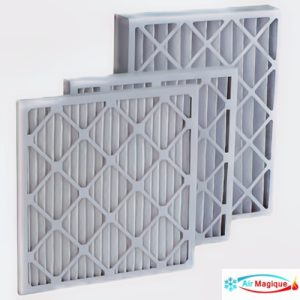Furnace filters play a crucial role in maintaining indoor air quality and the efficient functioning of your heating system. However, with various types of furnace filters available, it can be challenging to determine the most suitable one for your needs. In this post, we will review the different types of furnace filters, their unique features, and essential maintenance tips to keep your heating system running smoothly and your indoor air fresh and clean.
1. Fiberglass Filters:
Fiberglass filters are the most common and budget-friendly option for furnace filtration. These filters are composed of layered fiberglass fibers and are designed to capture large dust particles and debris. While they are effective at preventing larger particles from circulating in your home, they have limited capabilities for capturing smaller allergens and pollutants. Fiberglass filters are best suited for households with minimal air quality concerns and systems that do not require extensive filtration.
Maintenance Tip: Fiberglass filters should be replaced monthly to ensure optimal performance. A clogged or dirty filter can hinder airflow, strain your furnace, and compromise its efficiency.
2. Pleated Filters:
Pleated filters are an upgrade from fiberglass filters and offer better filtration capabilities. These filters consist of folded layers of polyester or cotton, providing a larger surface area for capturing both large and small particles. Pleated filters can effectively trap dust, pet dander, pollen, and mold spores, enhancing indoor air quality. They are ideal for homes with moderate air quality concerns and standard heating systems.
Maintenance Tip: Pleated filters typically have a longer lifespan than fiberglass filters, but they should still be replaced every three months or according to the manufacturer’s guidelines. Regularly inspect the filter to ensure it is not excessively dirty or clogged.
3. High-Efficiency Particulate Air (HEPA) Filters:
HEPA filters are the gold standard in furnace filtration. These filters can capture up to 99.97% of particles as small as 0.3 microns, making them highly effective in removing allergens, bacteria, and viruses from the air. HEPA filters are especially beneficial for households with allergy sufferers, asthma patients, or anyone concerned about indoor air quality. However, it’s essential to ensure that your furnace is compatible with HEPA filters, as they can restrict airflow in systems not designed to accommodate them.
Maintenance Tip: HEPA filters have a longer lifespan than standard filters, but regular maintenance is still necessary. Check the manufacturer’s recommendations for replacement intervals and follow them accordingly.

4. Washable Electrostatic Filters:
Washable electrostatic filters use an electric charge to attract and trap airborne particles. These filters are reusable and offer moderate filtration efficiency. They are considered as eco-friendly alternatives to disposable filters and can be an economical option over time. However, proper and regular cleaning is essential to maintaining their efficiency.
Maintenance Tip: Washable electrostatic filters should be cleaned every one to three months, depending on usage and air quality. Follow the manufacturer’s instructions for proper cleaning and drying methods.
Conclusion:
Choosing the right furnace filter is essential for maintaining a healthy indoor environment and optimizing the performance of your heating system. Consider your air quality needs, budget, and furnace specifications when selecting a filter. Regular maintenance, including timely filter replacements or cleanings, is vital to ensuring your furnace operates efficiently and your home’s air remains clean and fresh.
Prioritize filter maintenance as part of your routine heating services to extend the lifespan of your furnace and enjoy comfortable, pollutant-free air throughout the year. If you need to consult a professional, contact Air Magique!